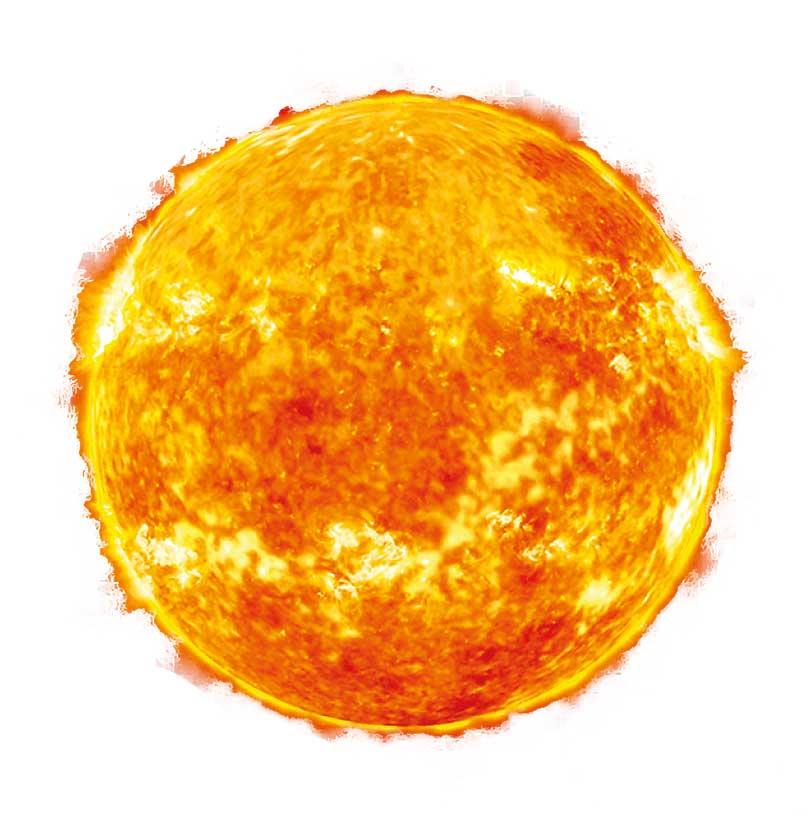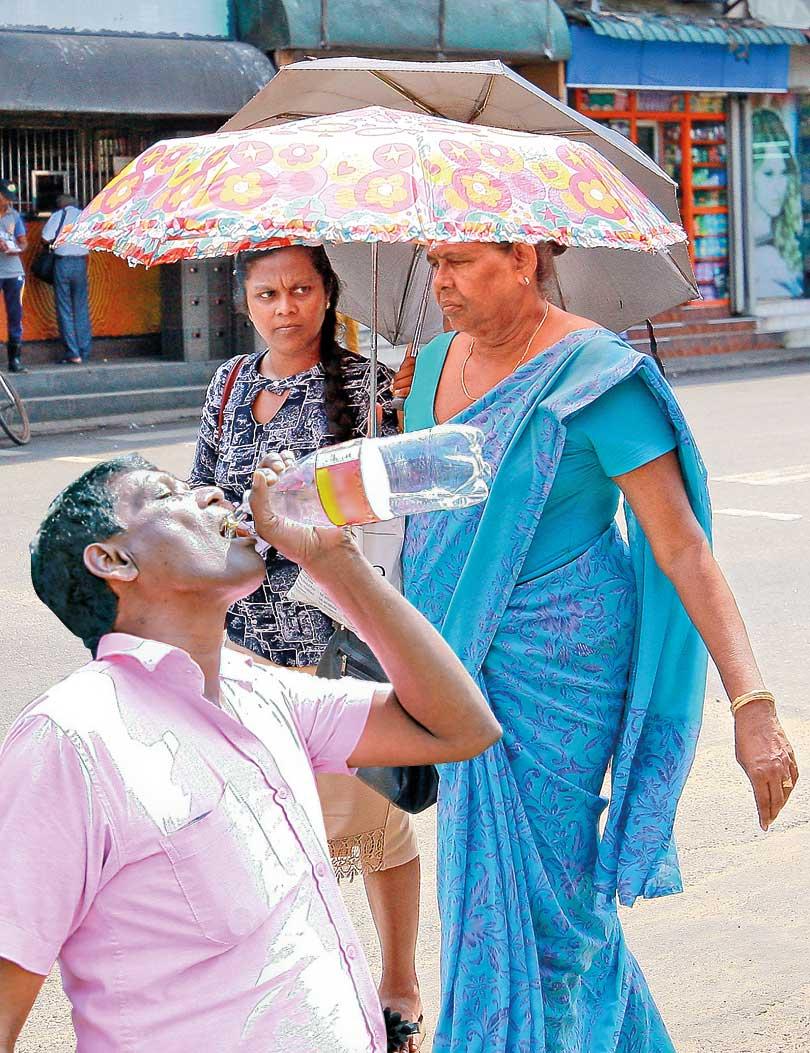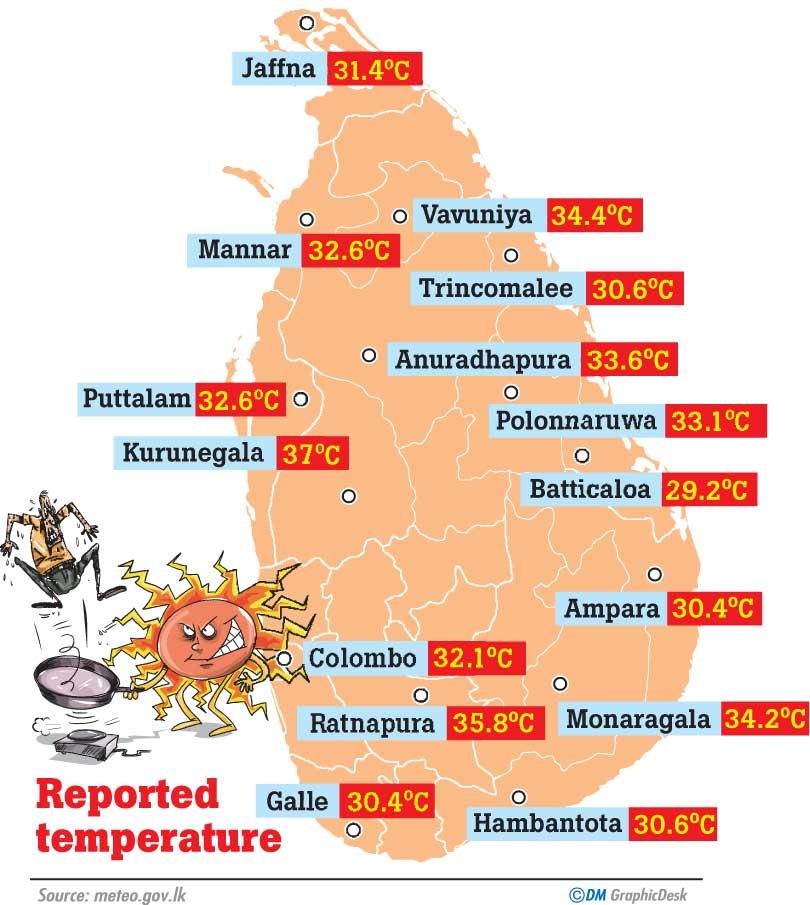05 Mar 2020 - {{hitsCtrl.values.hits}}
 Being a tropical country Sri Lanka’s climatic conditions are decided by two Monsoon seasons, which bring rain to the west and south-west coasts from May to September; and the east coast and northern region between October and February.
Being a tropical country Sri Lanka’s climatic conditions are decided by two Monsoon seasons, which bring rain to the west and south-west coasts from May to September; and the east coast and northern region between October and February.
The rest of the year is sunny and dry. Temperatures are fairly constant year-round, with coastal regions enjoying average temperatures of 25-30°C and the highlands 15-18°C on average.
However, Sri Lanka is currently experiencing considerably higher hot weather conditions inconveniencing the general public.
Hence, the Department of Meteorology has been compelled to issue several hot weather advisories warning the people living in vulnerable areas to be extremely cautious of the hot weather.

According to the heat advisory issued by the Meteorology Department, the areas that are likely to be affected are North-Western, Western, Sabaragamuwa, Southern Provinces and Mannar, Moneragala Districts.
The department also warned that those living in these areas should avoid venturing outside too much during the next few days, particularly in the morning hours as heat strokes, cramps and heat exhaustion being some of the after-effects that could occur if precautions were not taken.
Meanwhile, the maximum temperature of 37.6°C has been so far reported from Rathnapura.
The Meteorology Department said that the Heat Index Forecast is calculated by using relative humidity and maximum temperature and this is the condition that is felt on the body.
This is not the forecast of maximum temperature.
“lt is generated by the Department of Meteorology for the next day and is prepared by using global numerical weather prediction model data,” an official at the Meteorology Department said.
“The relative humidity of the air is the amount of water that is present in the air compared to the greatest amount it would be possible for the air to hold at that temperature,” the official said.
The following four factors are mainly caused by the prevalence of the hot weather.

However, the Education Ministry recently advised school administrations to take precautionary measures due to the prevailing hot weather including disallowing students to engage in any physical activities outdoors between 11 a.m. and 3.30 p.m.
Recommendations in this regard had been issued to the Education Ministry by the Ministry of Indigenous Medicine and Family Health Bureau.
According to the Ministry, children had been identified as a high-risk group for complications such as stress, muscle cramps, the heatstroke and lung disease due to high temperature.

Speaking to the Daily Mirror, National Building Research Organisation (NBRO) Senior Scientist H.D. Sarath Premasiri said that people should avoid unnecessary exposure to the sunlight and to drink plenty of water or fluids frequently due to the comparative increase in temperature in the country.
He urged the people to prevent the human body from being exposed to the sun and asked to stay under a shade, whenever possible. “Overexposure to the sun might lead to complications in certain people and thus it is good for everyone to stay away from the sun,” he said.
“The reason for this phenomenon is the prevailing climate changes that have affected the entire world,” he added.
 The prevailing hot weather condition would last until mid-April, Director General of the Department of Meteorology Athula Karunanayake said.
The prevailing hot weather condition would last until mid-April, Director General of the Department of Meteorology Athula Karunanayake said.
Speaking to the Daily Mirror, he said there could be minor spells of showers soon. “However, it would take another month for the prevailing hot weather to change. We are monitoring the prevailing climate changes,” he added.
He said the temperature levels of several areas had increased by two to three times than the average level. People living in the coastal areas would feel the weather is hotter than those who are living elsewhere.
Temperature levels of several areas had increased by two to three times than the average level. People living in the coastal areas would feel the weather is hotter than those who are living elsewhere
The Department of Meteorology with the assistance of the Ministry of Health issued a recent bulletin on precautionary measures to be taken during the warm weather.
Instructions were given to increase the intake of liquids while avoiding exposure to the hot sun as much as possible
Be alert on the following discomforts you may get due to heat
The Health Promotion Bureau has requested the general public to seek medical advice immediately if they experience these discomforts mentioned above.

28 Nov 2024 31 minute ago
28 Nov 2024 39 minute ago
28 Nov 2024 2 hours ago
28 Nov 2024 2 hours ago
28 Nov 2024 4 hours ago